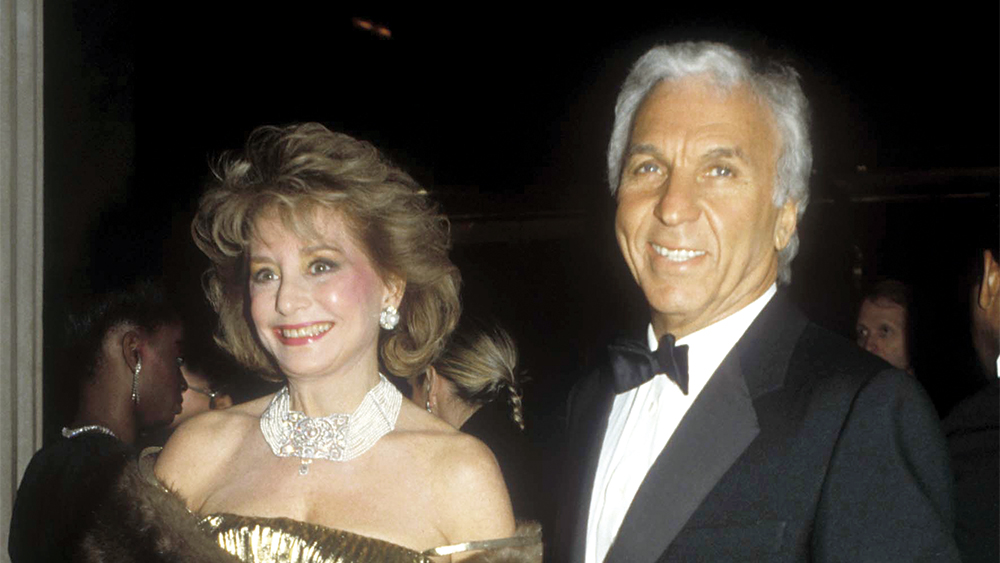But what about Barbara Walters’s short-lived nuptials to Lorimar Pictures president Merv Adelson in the mid-1980s? I wrote about all this in my Fox411 column in the 00s. Here it is:
In her much-hyped autobiography, “Audition,” the septuagenarian broadcaster makes short shrift of her time with Adelson, whose film and TV company brought us “Dallas,” “Knots Landing” and “Falcon Crest,” three of the biggest hits of the 1980s.
Adelson also was co-owner of a Southern California health spa called La Costa. His partner was Moe Dalitz, a self-described bootlegger, liquor-smuggler and gambling house operator. (Dalitz died in 1989 at age 90.)
I say self-described because that’s how Dalitz characterized himself on the stand when he and Adelson sued Penthouse magazine for libel in 1975 after the magazine published an article asserting that La Costa was a haven for criminals.
According to many reports, including one in Fortune magazine, La Costa was built on money borrowed from the Teamsters Central States pension fund, which once was controlled by Jimmy Hoffa.
When Dalitz testified, he also said, according to The New York Times, that “he knew or was friendly with a long list of organized crime figures, including Meyer Lansky, the reputed Mafia financier, and Sam Giancana, a Chicago mob leader who was murdered in 1975.”
Initially, Penthouse won the libel suit. According to The Times, “among the witnesses were a Mafia killer, Aladena (Jimmy the Weasel) Fratianno, and other ex-convicts who supported the Penthouse contention that La Costa was an organized crime center.”
The verdict was overturned on appeal and then settled out of court with a letter of clarification. The whole process took almost a decade, beginning in 1975.
According to The Times and other reports, Dalitz testified “he knew Mr. Giancana and that the Chicago mobster had been a guest at the Desert Inn in Las Vegas when Mr. Dalitz was a part owner of that hotel and casino.
“Dalitz said that he had met several people whom he would characterize as organized crime figures, including Mr. Lansky, Anthony (Big Tuna) Accardo, Jake (Greasy Thumb) Gusik, Abner (Longie) Zwillman and Benjamin (Bugsy) Siegel, who pioneered the Las Vegas gambling strip in the 1940s.”
There’s more about Morris Dalitz in mob history, but you get the gist of it. Still, no one ever accused Adelson directly of being in the mob or tied to the mob, just knowing and being partners with people who did business with the mob. There’s a big distinction.
Still, Walters, a savvy journalist, married Adelson in 1986. But the marriage never shook off questions about the mob — something that wasn’t helping Barbara’s reputation as a journalist.
Walters told me: “It was something other people were concerned about. I think it was unfair attribution to reputation. He’d had this difficult libel suit. It was something that clung to him. And there were people professionally and personally who were concerned.”
In 1986, right after they were married, the Wall Street Journal published a story citing a 1966 FBI report describing Adelson as being in “close association with the hoodlum element.”
The stories about Adelson and his associates started once again.
I did ask her if the marriage suddenly had shined a big light on his activities. For example, she’d hosted a big charity party at La Costa after their wedding that attracted guests from both sides of the aisle — her celebs, his Las Vegas cronies. There was a lot of negative press.
Walters said: “La Costa had a reputation for attracting members of organized crime. Merv was never a member of organized crime. He had nothing to do with that. When we were married, [the attention] happened because he wanted to buy a very large chain of [television] stations. The fact that he was married to me might have made him more vulnerable.”
The Journal story may have queered the deal for Lorimar to buy the stations. It cost the company $7 million and instigated several years of financial losses for Adelson. Within a year of his marriage to Walters, he sold both Lorimar and La Costa.
It’s unclear when they divorced. When I interviewed Walters for a magazine piece in the summer of 1991, they still had not legally filed legal papers. He lived in Los Angeles; her life was in New York. When they broke up, that was the given reason: distance. Walters writes in her book that “the marriage sputtered along” and that by September 1990 “it had run out of steam.”

